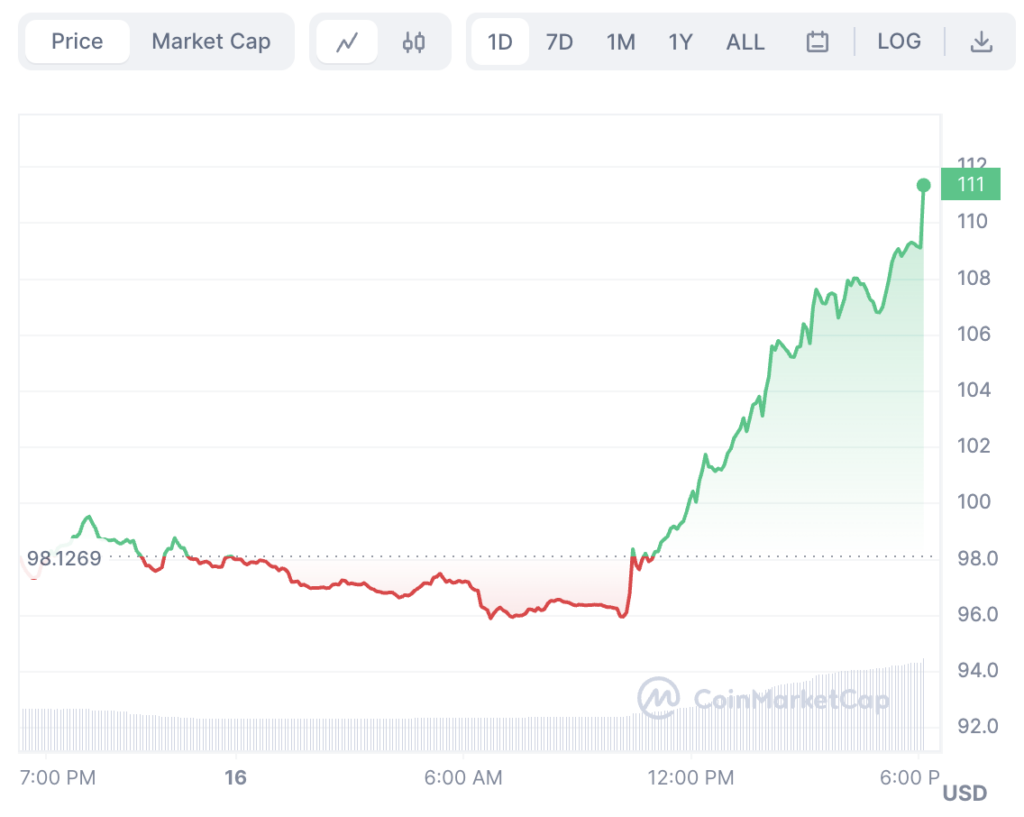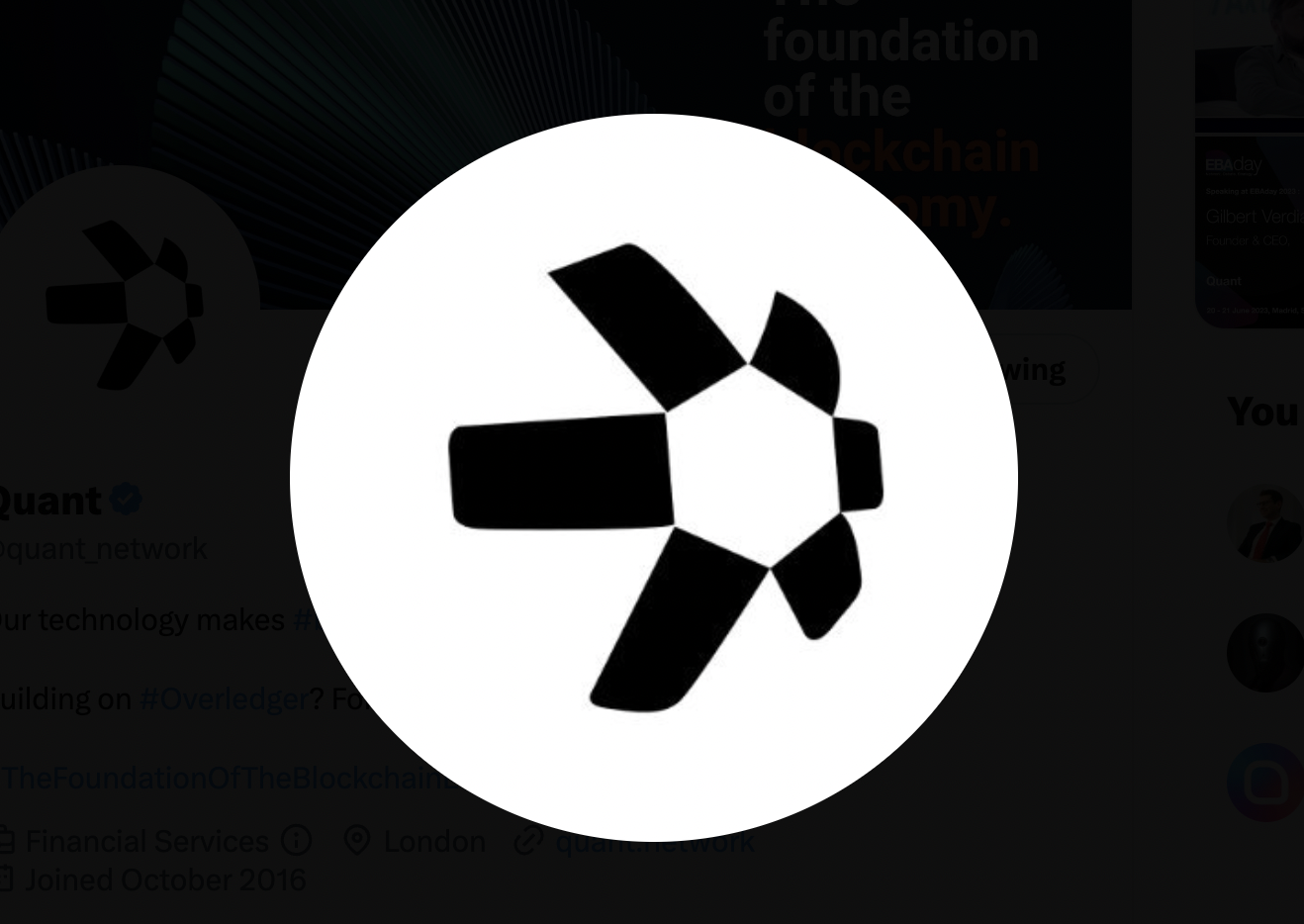Quant (QNT) is experiencing a notable upswing, with its current trading price reaching $110.69, reflecting an impressive 12% surge within the past 24 hours. Its trading volume has similarly soared by 107% to $38million in the same period.
This significant price increase can be attributed to the recent announcement of Quant’s partnership with the Bank of England and the Bank of International Settlements (BIS) in its ongoing CBDC project.

The project dubbed ‘Project Rosalinda’ is exploring how CBDCs can be used to facilitate retail payments through APIs.
A statement on Quant Network’s official website reads: “We’re proud to announce our role as part of the vendor team for Project Rosalind. The project, led by the Bank for International Settlements and the Bank of England, explored how application programming interfaces could be used for central bank digital currency systems.”
The statement further highlighted Quant Network’s contribution towards the project – the development of API functionalities for seamless programmability with the private sector.
Quant Network CEO Gilbert Verdian encouraged the banks to embrace CBDCs and start making plans to incorporate them in their business.
“For the first time, money is ready for the digital age. A CBDC will enable citizens and businesses to automate cumbersome payments and processes and implement logic into money. For commercial banks and other institutions, the opportunity to apply this programmability to create innovative new products that differentiate themselves from challengers and competitors is almost endless.
“We encourage every bank and financial institution to read the Project Rosalind report and start planning their smart money infrastructure strategy,” he said.
Two-tier model
BIS described Project Rosalinda as being based on a two-tier model consisting of the central bank as the first layer and foundation. It named the second layer as the private sector, specifically service providers who will engage directly with customers and carry out customer-facing activities.
“A joint experimentation with the Bank of England, Project Rosalind aims to develop prototypes for an application programming interface. Based on a two-tier distribution model (central bank at the foundation of the retail CBDC system and customer-facing activities carried out by the private sector), the objective is to explore how this interface could best enable a central bank ledger to interact with private sector service providers to safely provision retail payments.”
Project Rosalinda’s first phase testing was largely successful, leading to reports by Bloomberg that a GBP CBDC could be on the cards. BIS had however stated on its website that the project was purely experimental and doesn’t reflect any intentions to launch a CBDC
Ripple also strengthening ties with TradFi
The news comes a day after Ripple announced its partnership with Banco de la República (Central Bank of Colombia) to explore the application of blockchain technology.
Two of its core technologies – XRP Ledger and Ripple CBDC platform – will be used by the country’s apex bank to drive the use of blockchain technology in its payment systems.


